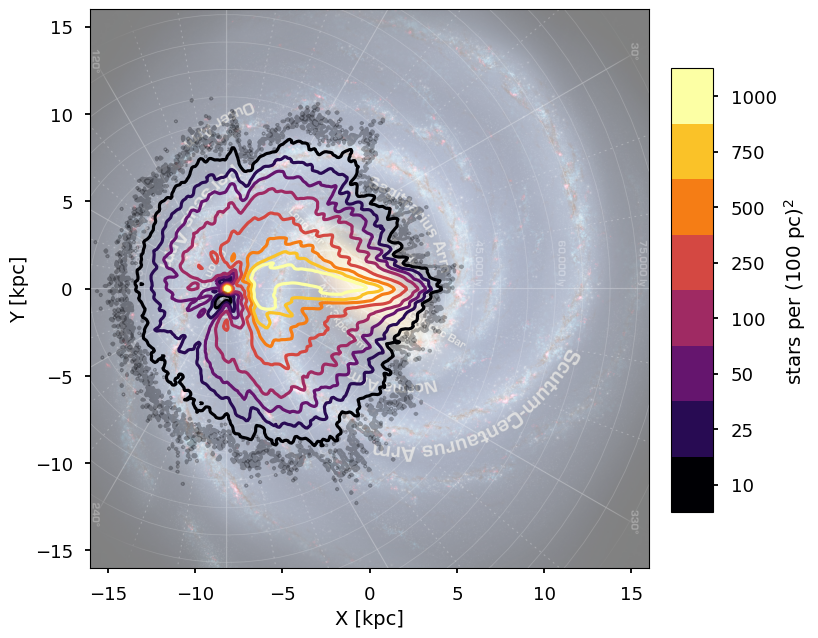
Image Credit: Jon Bird. Milky Way Image: Robert Hurt/NASA
The Galactic Genesis program is Milky Way Mapper’s largest program, collecting an APOGEE spectrum of 4-5 million infrared bright stars across the Milky Way. The selection function deliberately aims to select red giants above the red clump, to ensure that a reasonable number of high-luminosity distant giants will be observed. The sky coverage of this program will follow the underlying mass distribution of the the Galaxy, with more targets observed in the plane and bulge. The resulting sample will give an unprecedented view of the chemo-dynamic structure of the Milky Way.
We rely upon a simple selection function using the crossmatch of the Gaia (DR2) and 2MASS Point Source (PSC) catalogs provided in Gaia DR2 and incorporated into the TESS Input Catalog v8. The selection function targets all stars with reliable 2MASS photometry, as defined by the selection function, that are demonstrably red according to a Gaia-2MASS color cut and bright enough in the H-band to obtain spectra with sufficient SNR in a single 15 minute exposure.
The color-magnitude cut effectively targets luminous cool giant stars with low surface gravity (1.0 < median logg < 1.5) with little (< 6%) contamination from dwarf stars.
Cartons
Galactic Genesis Carton in Targeting Generation v0.5.3
The Galactic Genesis program contains a single carton with a simple selection function combined with several photometric quality cuts. The G-band magnitudes come from Gaia DR2 and the H-band magnitudes from the 2MASS point source catalog.
- mwm_galactic_core
- H < 11
- G – H > 3.5 OR Gaia non-detection
- 2MASS gal_contam == 0
- 2MASS cc_flg == 0
- 0 < 2MASS rd_flag <= 3
- 2MASS ph_qual flag is A or B
Cadences
All Galactic Genesis targets utilize the bright_1x1 cadence.
